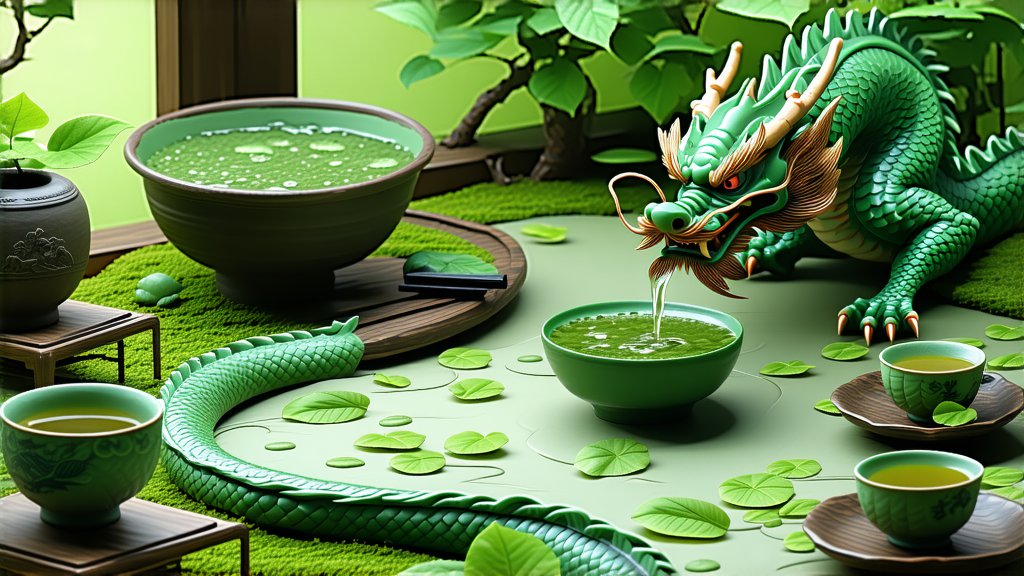
In the vast and varied landscape of Chinese tea culture, few teas capture the essence of elegance and tradition as profoundly as Longjing (Dragon Well) tea. Originating from the verdant hills surrounding West Lake in Hangzhou, Zhejiang Province, Longjing is not merely a beverage; it is an experience steeped in history, a testament to meticulous craftsmanship, and a symbol of China's rich cultural heritage. This article embarks on a journey to unravel the intricacies of this exquisite green tea, exploring its historical roots, varieties, intricate production process, and the art of its appreciation.
A Historical Brew
Longjing tea traces its origins back to the Tang Dynasty (618-907 AD), though it gained prominence during the Qing Dynasty when Emperor Kangxi was so enamored by its flavor that he had 18 tea trees near the spring where the tea grew named after his reign period, "Kangxi." Over centuries, these ancient tea bushes have been carefully propagated, preserving the unique characteristics that define Longjing tea. Today, it stands as one of China's most revered and internationally acclaimed teas.
Varieties of Dragon Well Tea
While Longjing itself is a specific variety of green tea, within this category, there exist subtle variations based on factors such as terroir, harvest time, and processing techniques. Two primary distinctions are 'Xi Hu Long Jing' (West Lake Dragon Well) and 'Qian Tang Long Jing' (from Qiantang region). Xi Hu Long Jing, grown around West Lake, is considered the epitome of quality due to its ideal microclimate and soil conditions. Qian Tang Long Jing, while equally esteemed, hails from neighboring regions but shares similar cultivation practices.
The Dance of Leaves: Crafting Longjing Tea
The magic of Longjing lies not only in its birthplace but also in the artistry involved in its creation. Harvested in early spring, typically between March and April, the young tender leaves are handpicked, ensuring only the top two leaves and bud set are selected for optimal flavor and aroma. The artisanal process unfolds in several stages:
-
Fixation: Freshly picked leaves undergo high-temperature fixation to halt oxidation, locking in the vibrant green color and fresh aroma.
-
Shaping: This step involves skillful rolling and shaping of the leaves by hand or using specialized machines to achieve the distinctive flat shape reminiscent of a sparrow's tongue or the blades of a willow tree.
-
Drying: The shaped leaves are then gently dried to reduce moisture content, enhancing their crispness and longevity without compromising the delicate flavors.
-
Sorting & Grading: Finally, the tea is meticulously sorted by size and grade, with premium grades featuring uniform leaf shapes and sizes, indicating superior quality.
The Symphony of Taste: Savoring Longjing
To truly appreciate Longjing tea is to engage in a sensory ritual that celebrates its nuances. The following steps guide an authentic tea-tasting experience:
-
Warm the Tea Ware: Begin by rinsing your teapot and cups with hot water to warm them up and enhance the tea's aroma.
-
Infusion: Place approximately 3 grams of Longjing tea per 150ml of water into the pot. Use water heated to about 80°C (175°F) to preserve the tea's delicate flavors.
-
First Brew: Steep for 1-2 minutes before pouring out the first infusion, which serves to 'wake up' the leaves and discard any impurities.
-
Subsequent Infusions: For subsequent brews, increase steeping time slightly, typically by 30 seconds to 1 minute, adjusting according to personal preference.
-
Observation & Aroma: Admire the bright yellow-green hue of the liquor and inhale deeply to savor the fresh, chestnut-like aroma with hints of grassiness and floral notes.
-
Tasting: Take small sips, allowing the tea to spread across your palate, noting its smooth, slightly sweet flavor profile balanced with a refreshing vegetal undertone and a lingering mellow finish.
Conclusion
Longjing tea embodies the harmony between nature and human ingenuity, offering a window into China's millennia-old tea tradition. Its cultivation, harvesting, and processing are meticulously executed to preserve the purity and complexity of its flavors. As you embark on your own exploration of this remarkable tea, remember that each cup tells a story—a story of patience, precision, and a deep respect for the land that nurtures it. Whether you are a seasoned connoisseur or a curious newcomer, immerse yourself in the world of Dragon Well tea and let it transport you to the tranquil shores of West Lake, where every sip whispers tales of ancient emperors and timeless beauty.